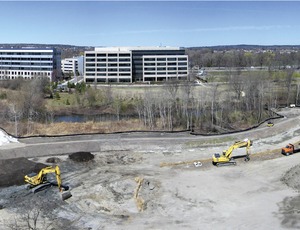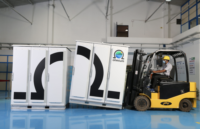
John J. Struzziery knew it wasn't going to be easy to design a solution for Cambridge, Mass., to meet mandated federal water-quality upgrades and stormwater-runoff control in a tight, state-owned urban space.
But the Kleinfelder senior program manager didn't expect a more than dozen-year epic that included extensive permitting and three court challenges. Now, however, the Alewife Stormwater Wetland Project provides a template for cities to control runoff with green, rather than "gray," infrastructure, he says, that also offers a larger public benefit.

|
| STRUZZIERY |
On a 3.5-acre site that once hosted homeless people and invasive species, the Struzziery-led team has designed and built a unique constructed wetland. Believed to be the largest in the U.S., it is the cornerstone of Cambridge's combined-sewer-overflow control plan and includes an urban park for residents.
A nearly 3,000-ft-long concrete culvert conveys stormwater to the wetland to be stored, attenuated and treated before discharge into the Little River. "This project demonstrates the value of taking a larger view to integrate an engineering project within the greater environment," says Struzziery, noting innovations from team members MWH Global and BioEngineering. "It has demonstrated a unique approach to promote awareness of green infrastructure measures." The project also features innovative use of a pilot-tube auger bore to place utilities under the wetland without needing extra permits.
"The gestation for this project was 12 years," says Owen O'Riordan, the city's commissioner of public works. "The permitting and legal struggles to bring it to construction were extraordinary."
While Struzziery credits O'Riordan's own dedication to a non-traditional solution, the official points to the engineer's technical knowledge and "exhaustive" alternatives analysis to gain support.
"This was a superhuman effort on John's part," says O'Riordan. More sewer separation is set for this year, but the $26.4-million, under-budget project is already "a huge success from an ecological and resource perspective," he says. "The full benefits have not even been fully realized yet."
One federal judge involved in the project's legal battle termed the project "an environmental miracle," but Struzziery says it is "a model for other economically challenged municipalities struggling to deal with costly solutions to unfunded mandates."





Post a comment to this article
Report Abusive Comment